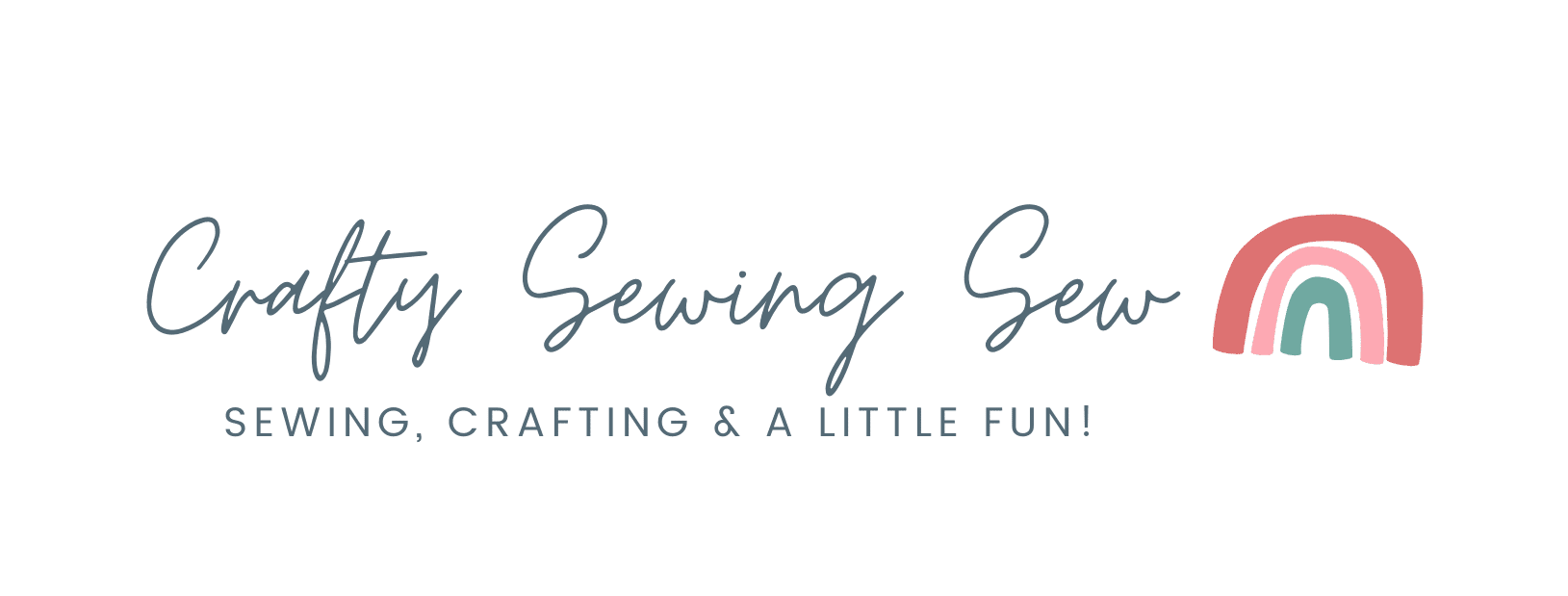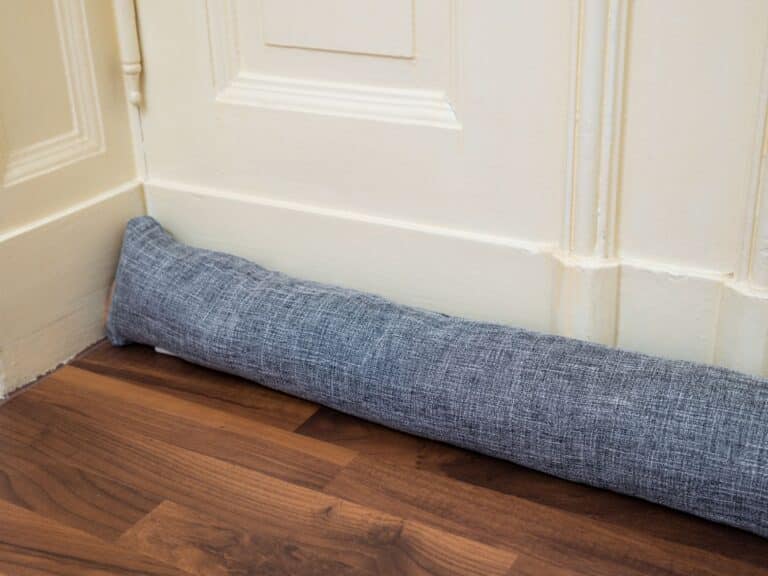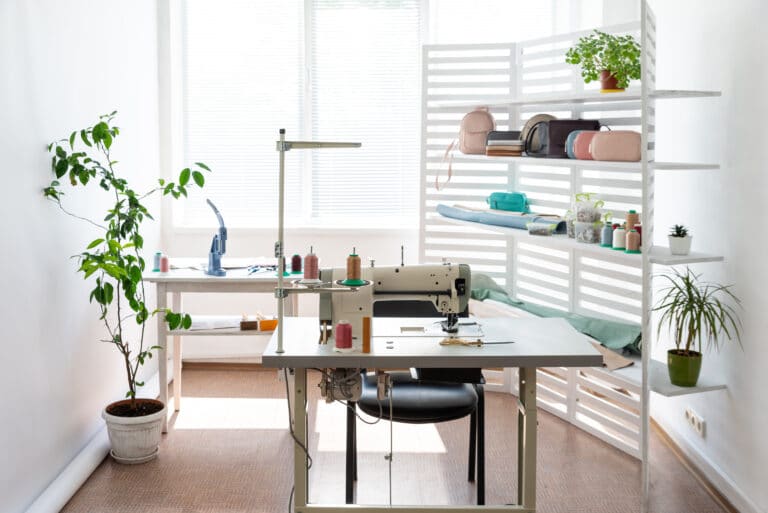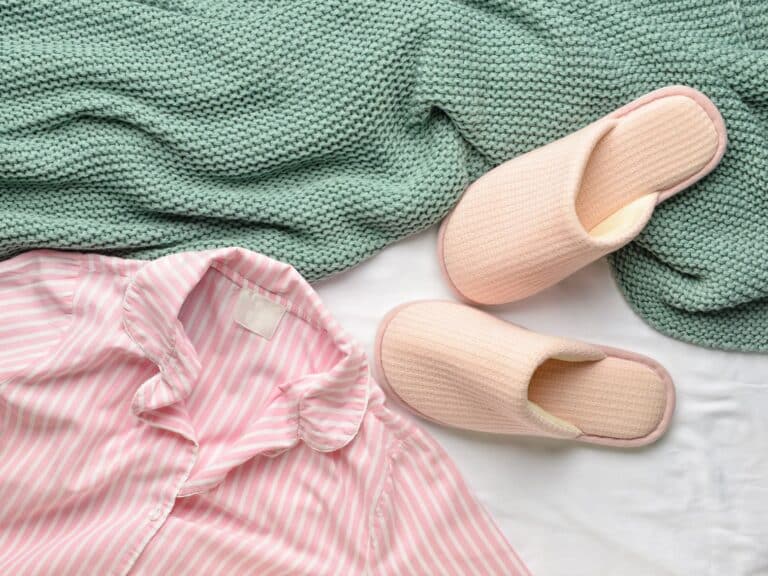What Is A 3 Thread Overlocker Used For?
Some of the links below are affiliate links. As an Amazon Associate I earn from qualifying purchases. This means that, at zero cost to you, I will earn an affiliate commission if you click through the link and finalize a purchase.
A three-thread overlocker is used primarily for sewing knitted and woven fabrics of light to medium weight. This is because it uses one needle thread, which allows for more flexibility and fewer bulky seams.
The three-thread overlocker is great for flexibility, durability, and stability, which is why people prefer it. There are plenty of different options for machines and overlockers so it can be confusing to what you really need.
In this article, I am going to talk about what a 3 thread overlocker is, what is done and what it is best used for.
What Is A 3 Thread Overlocker?
The three-thread overlocker is one of the most common construction stitches. It uses one needle and two loopers; hence, it is known as a flexible construction stitch.
You can use it to sew stitches, overlock trims, and overcast seams. This thread overlocker can create both wide and narrow stitches depending on the side of the needle used.

It is the best choice for sewing knits; however, you cannot sew stress areas for wovens. It is similar to the four-thread overlocker; however, unlike the four-thread version, it is suitable for sewing fabrics that do not require bulkier seams. You can convert some three-thread overlocker machine models for two-thread stitches.
What Are the Uses of A 3 Thread Overlocker?
A three-thread overlocker can be used for the general construction of seams like knits or woven. It is quite advanced than the two-thread overlocker; hence, people prefer it a lot. Here are some important uses of the three-thread overlocker:
1. For decorative stitches
The three-thread overlocker is the right choice for making decorative stitches in garments. Having one needle allows it to use various threads or yarns that can be used to create several decorative stitches in the garments.

Crochet yarn, buttonhole twist, narrow ribbon, Perle cotton, and many more are examples of threads or yarns that a three-thread overlocker can work with for decorative stitches.
2. For attaching lace, trims, or beads
Lace, trims, or beads are some add-ons that can be added to a lightweight fabric. Due to needing flexible yet stable stitching, the three-thread overlocker is the best option for attaching them to garments.
The light fabrics will benefit from this addition because of their weight; the medium-weight garments can also work well. While attaching lace, trims, or beads to the garments, there is no need for extra seams as the one needle stitching done by the three-thread overlocker is enough.
3. For making blind stitch
A blind stitch is one whose stitching thread is invisible on one side and almost invisible on the other. It is called the blind stitch because you will barely see the stitch.
The three-thread overlocker is a great choice for sewing garments or materials that require blind stitches. Because it has only one needle, it does not create a stitch on the right side, while the left or wrong side is barely visible.
When joining two fabrics together, and you do not want the hemming or stitching to show on the outer part, the three-thread overlocker is your best bet.
Other uses of a three-thread overlocker include:
- Patchwork piecing for joining shaped pieces to fabrics.
- For piping for defining or reinforcing garments’ style lines.
- For General construction stitches, especially for knitted and woven fabrics.
Can A 3 Thread Overlocker Be Used on Any Fabric?
No, you can use a three-thread overlocker for many fabrics, but not all types. Because it has only one needle, it cannot strengthen the wrapped edges; hence, it is unsuitable for thicker materials.
It is especially good for knits due to its flexibility and durability. However, it is not suitable for wovens with many stress areas like the crotch of pants or sleeves of shirts and blouses.
The three-thread overlocker is the best option if you want a cleaner edge without bulkier seams. You can use it for both domestic and industrial sewing.
How to Use A 3 Thread Overlocker
Using a three-thread overlocker like others involves threading the overlocker machine, adjusting the tension, then finishing the seams.

Here is an outline of the use of a three-thread overlocker. Before proceeding to the use of a three-thread overlocker, here are the things required when using one.
- An overlocker machine
- Three spools of thread
- A piece of fabric
- Tweezers
- Overlocker machine manual
How to use a three-thread overlocker:
1. Threading an overlocker machine
- It is best to turn off the machine before threading it for safety reasons. You can do this by switching the power button off, as indicated in the manual.
- Follow the correct threading order, according to what the machine manual dictates. A three-thread overlocker is usually one spool of thread in the needle and two loopings beneath it. The two looper threads are typically placed in upper and lower loopers on the sides of the machine.
- For the needle threading, place the thread on a spindle, where it is accessible and not the place you can easily knock it over. Put the thread through the needle on the overlocker machine. Your tweezers may come in handy here.
- It is crucial always to remove the needle that is not in use to form the stitch properly.
- The upper looper is usually located on the right side of the machine. Set a spool of thread on the upper looper, and place it on the correct spindle as shown in the manual. Drag the upper looper thread up so that it lies below the needle. Remove the machine’s front faceplate and pull the looper thread through the metal loops beneath the plate.
- Set the spool of thread on the second spindle and bring it over the machine’s front for the lower looper. The tweezers are useful here as you need them to help you get the thread through the machine’s tight spots.
2. Adjusting the Tension
- To adjust the tension on the machine, switch on the power button.
- An overlocker machine can do various things, including finishing raw knit edges, gathering fabrics, creating a rolled hem, and many more. Determine what you want to do with the machine, which will help determine the stitch to use. Check through the machine’s manual for what stitch to use for what purpose.
- The machine’s manual should also point out the required tension for each thread’s spool. Make adjustments to each spool’s tension dial accordingly.
- Try a practice stitch by placing your foot on the machine pedal and letting the machine create a looped thread. You do not require fabric under the needle for a practice stitch.
- With the overlocker machine’s manual, you can inspect the looped thread to clarify how it is meant to turn out. The loops and interlocking stitches need to be even, devoid of too loose or too even areas.
- Adjust the tension dials of each spool of thread on the overlocker machine for loose stitches to make it tighter.
- For puckered or bunched-up stitches, adjust the tension dials to loosen the tension on the machine.
- Now, you can practice stitching a piece of fabric with the machine. Practice until the stitches become even before starting on the real materials.
3. Finishing the Seams
- Lift the metal presser foot by lifting the presser foot lever, then turn the needle dial towards you to lift the needle.
- Lift the string up and back while you slide your fabric under the presser foot and the needle.
- Lower the foot by lowering the presser lever to lower the foot, then lower the needle by turning the needle dial towards you.
- Most overlocker machines usually cut your fabrics while finishing the seams. Check the right side of the needle for the seam allowance numbers, then push the material past the blade accordingly. The seam allowance numbers can range from 1.5 to 2.5 cm, depending on what you used when measuring your fabric.
- Use the foot pedal to guide and control the speed when sewing. Avoid pushing on the fabric too hard while guiding the material straight while sewing. The feet on the overlocker machine will help drive the fabric through.
- At the end of your seam, continue sewing for a few stitches to create a tail of stitches, which you can tuck under and hand sew in place.



